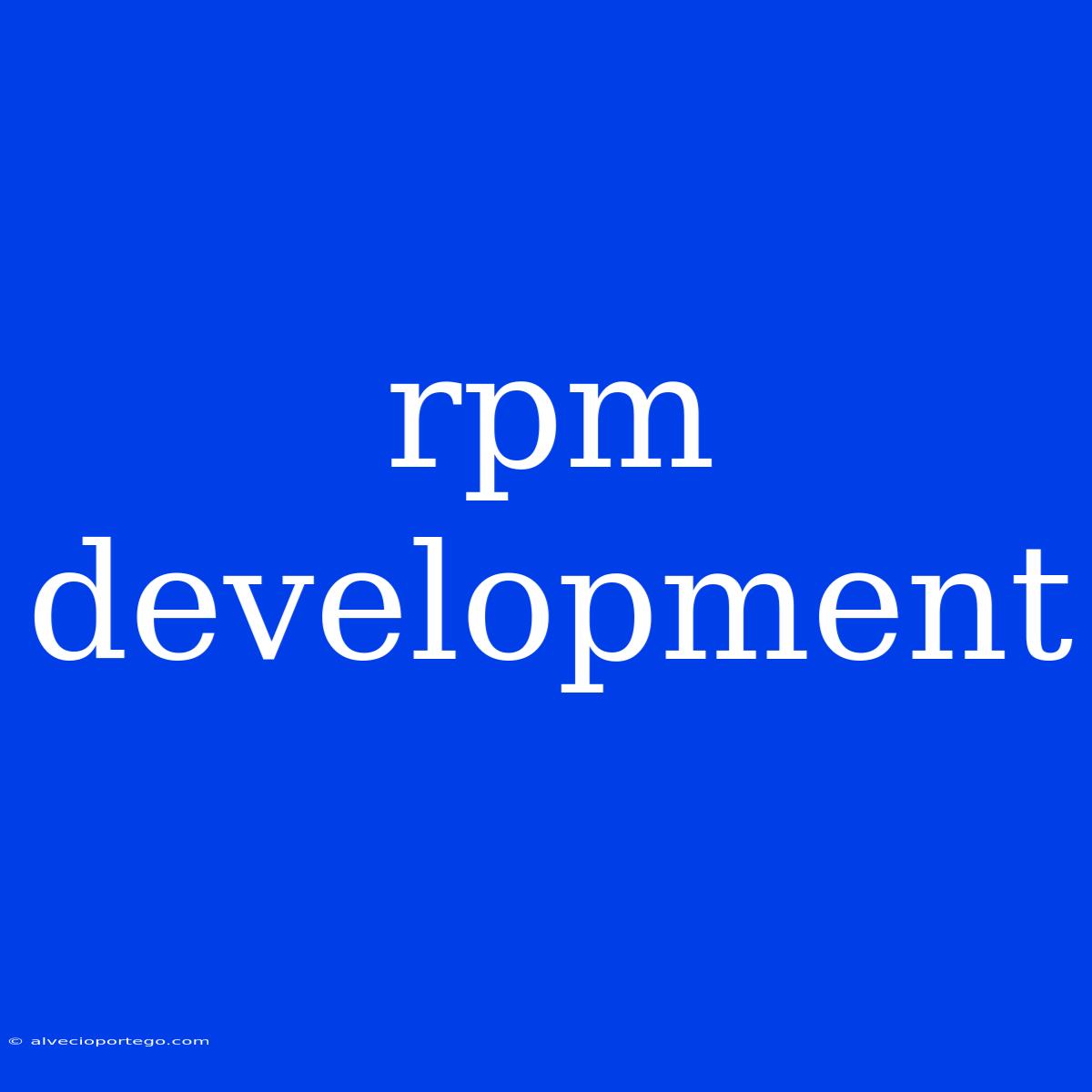RPM Development: A Comprehensive Guide
RPM (Red Hat Package Manager) is a widely used package management system, primarily associated with Linux distributions like Red Hat, CentOS, and Fedora. Developing RPM packages allows you to easily distribute and install software, ensuring consistency and maintainability across different systems.
This guide provides a comprehensive overview of RPM development, covering its core concepts, essential tools, and best practices.
Understanding RPM Packages
RPM packages are essentially compressed archives containing software files, metadata, and configuration files. This metadata includes:
- Package Name: Identifies the package.
- Version: Indicates the software version.
- Release: Differentiates between different releases of the same version.
- Architecture: Specifies the target architecture (e.g., x86_64, i386).
- Dependencies: Lists other packages required for installation.
- License: Details the software's licensing information.
Essential RPM Development Tools
- rpmbuild: The primary tool used to create RPM packages.
- spec file: A text file that defines the package's structure, dependencies, and build process.
- Source Code: The actual software code to be packaged.
- Buildroot: A temporary directory used to build the RPM package.
- mock: A tool for simulating different environments and testing package builds.
Building Your First RPM Package
Let's create a basic RPM package using a "Hello, World!" program as an example.
1. Create the Spec File:
Name: hello-world
Version: 1.0
Release: 1%{?dist}
Summary: A simple "Hello, World!" program
License: GPLv2
Group: Development/Tools
%description
This package contains a simple "Hello, World!" program.
%prep
%setup -q
%build
gcc -o hello hello.c
%install
mkdir -p %{buildroot}%{_bindir}
cp hello %{buildroot}%{_bindir}
%clean
rm -rf %{buildroot}
%files
%defattr(-,root,root)
%{_bindir}/hello
2. Create the Source Code (hello.c):
#include
int main() {
printf("Hello, World!\n");
return 0;
}
3. Build the RPM Package:
rpmbuild -bb hello-world.spec
This will create the RPM package in the 'RPMS' directory within your buildroot.
Spec File Essentials
- %package: Defines the package name and other attributes.
- %description: Provides a detailed description of the package.
- %prep: Prepares the build environment.
- %build: Compiles and builds the software.
- %install: Installs the built files into the RPM package.
- %files: Lists the files to be included in the package.
- %clean: Removes temporary files.
Best Practices
- Use Clear and Concise Spec Files: Well-structured spec files make your packages easier to understand and maintain.
- Specify Dependencies: Define both build and run-time dependencies to ensure package compatibility.
- Test Thoroughly: Utilize tools like
mockto test your packages in different environments. - Follow RPM Packaging Guidelines: Refer to the official documentation for best practices and guidelines.
- Version Control: Manage your source code and spec files using a version control system like Git.
Conclusion
RPM development is a powerful way to distribute and manage software in Linux environments. By understanding the fundamentals, using the right tools, and adhering to best practices, you can create robust, well-structured RPM packages that benefit your software distribution and management strategies.

